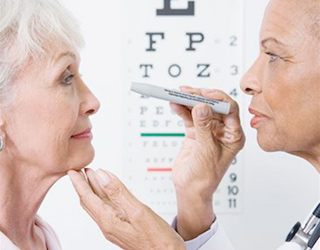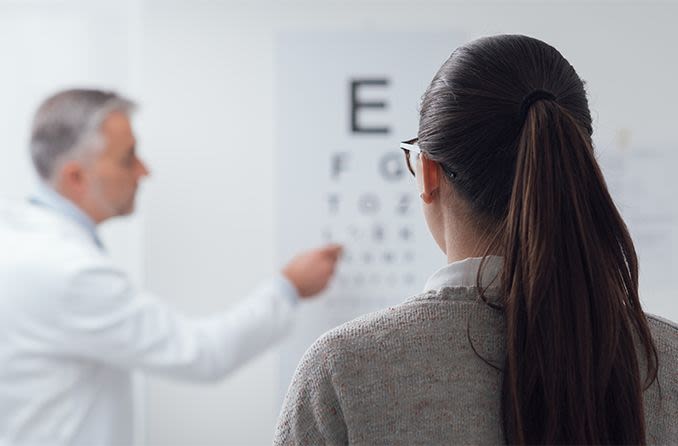LASIK Consultation Exam
During the pre-LASIK eye exam, our physicians analyze the current state of the patient’s vision, check for irregularities in the eye, and review your medical history. The LASIK eye exam appointment is an opportunity for patients to learn more about the procedure and raise any questions or concerns.
What To Consider Before LASIK
There are several factors to consider when determining whether LASIK surgery is an appropriate treatment option for patients. If you wear contacts, it is important that you stop wearing them two weeks before your LASIK evaluation because contacts can alter the shape of the cornea, resulting in inaccurate corneal mapping.
What to Expect During your Consultation
The LASIK procedure will be explained to you in detail and you will be asked about your medical history and your goals for laser eye surgery. Any questions you have will be answered honestly and clearly. Next, a team member will escort you to take a corneal topography test and a pachymetry test (the LASIK eye exam).
- Corneal Topography Test: The corneal topography test measures the shape of the corneas. Our experienced physicians use iDesign technology to “map” the cornea and gain a full understanding of your eye. This tool can identify any irregularities that may exclude you from undergoing LASIK. In addition, the data collected during this test will be used to guide the excimer laser used to reshape the cornea during the LASIK procedure.
- Pachymetry Test: Like the corneal topography test, the pachymetry test is used to gather information about the cornea. This test specifically measures the thickness of the cornea. Individuals with particularly thin corneas may experience better results with advanced surface ablation or iLASIK than with traditional LASIK.
- Evaluation of Medical History: It is important for patients to be candid about their medical history, including past vision problems, current medications, and diseases such as diabetes. Individuals who have previously suffered eye infections or trauma to the eye may require special accommodations in order for the LASIK procedure to be successful.
- Tear Analysis: Our doctors may also measure tear production and quality during the pre-LASIK eye exam. In many cases, patients who suffer from dry eye syndrome – a condition in which the eyes do not produce enough tears – see a flare in the condition as a side effect after LASIK surgery. By analyzing the tears before laser vision correction, our physicians can identify and treat the condition prior to surgery to ensure quick, complication-free healing.
Analyzing the Corneal Topography and Pachymetry Tests
After the tests are finished, you’ll return to your doctor’s office, and he will examine your test results. If the corneal topography and pachymetry tests show that your eyes meet the standards for LASIK, your doctor will put you in contact with one of our LASIK coordinators to schedule your surgery.
LASIK Surgery Alternatives
If LASIK is not the appropriate treatment for you, your doctor will recommend alternative treatments such as PRK. Advanced surface ablation, also called PRK, LASEK, Epi-LASIK, or Photorefractive keratectomy, delivers the laser vision correction part of LASIK right on the surface of the cornea without a flap. By not making a flap, the correction is placed more superficially in the cornea. About 30% of the patients at SightMD have surface laser vision correction.
PRK is safer for patients who have thinner corneas. This is because during LASIK, corneal tissue is removed. If you have thinner corneas, removing even a small amount of corneal tissue could prove devastating. PRK delivers comparable results to LASIK, without needing to remove any tissue from the cornea.
Recovery From Laser Eye Surgery
Your doctor will explain that, although recovery from surface ablation takes a little longer than from LASIK, vision correction results after one month are the same as those of LASIK. If your eyes are better suited to advanced surface ablation, it may help to know that 30 percent of all laser vision correction patients have surface ablation. Your SightMD doctor will always put your safety first when making any recommendations.

Understanding what Age-Related Macular Degeneration is
Age-related macular degeneration (AMD) is the most common cause of vision loss in individuals over the age of 50….

A Comprehensive Guide To Caring For Your Contact Lenses
In an age where people are increasingly neglecting their health, it is essential to take the necessary precautions to…

Can LASIK eye surgery fix astigmatism?
What is Astigmatism ? Astigmatism is a common type of refractive error and while it is usually present at birth,…